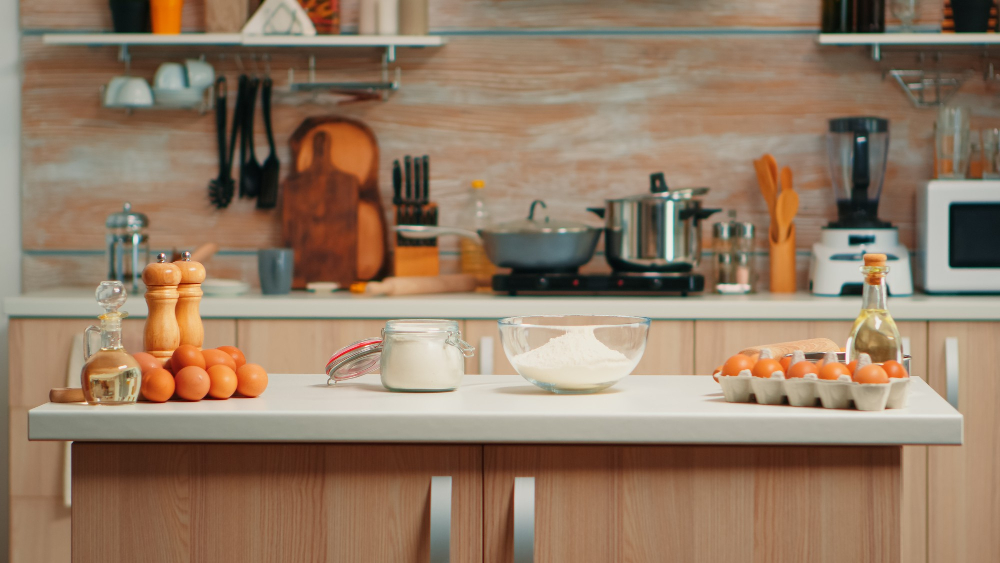Kitchen and Food Safety Tips for the Home Cook
Cooking is an art that allows us to express creativity and passion through food. Whether you’re a seasoned home cook or just starting your culinary journey, one aspect that should never be overlooked is kitchen and food safety. In this comprehensive guide. We’ll delve deep into the world of kitchen safety offering advanced techniques, tips, and insights to ensure your culinary adventures are not only delicious but also safe.
The Foundation of Kitchen Safety
Safety in the kitchen begins with knowledge and awareness. Before you even pick up a knife or turn on the stove, it’s essential to understand the basics of kitchen safety. Your kitchen layout plays a crucial role in safety. Organize your kitchen for efficiency, ensuring easy access to essential tools and ingredients. Familiarize yourself with fire extinguisher locations and how to use them. Always keep a well-stocked first aid kit within reach in case of minor accidents.

Food Handling and Preparation
Foodborne illnesses can be prevented by adopting proper food handling and preparation techniques. These practices are fundamental to safe cooking. Handwashing is a fundamental practice. Wash your hands thoroughly before and after handling food to prevent the spread of harmful bacteria. Prevent cross-contamination by keeping raw and cooked foods separate. Additionally, use safe methods for thawing frozen foods to avoid bacterial growth.
Safe Cooking Practices
Safe cooking practices ensure that your dishes not only taste fantastic but are also free from harmful bacteria and pathogens. Use a food thermometer to ensure food reaches safe internal temperatures. Different foods have different safe temperatures, so refer to a reliable source for guidelines. Be cautious when frying to prevent hot oil splatters and burns. Regularly inspect your cookware for any signs of damage or wear to avoid potential hazards.

Storage and Preservation
Proper storage and preservation techniques are essential to reduce food waste and maintain food safety. Refrigeration is critical for perishable items. Store them at the correct temperatures to extend their shelf life. Use labels to keep track of when food items were prepared or opened. Reheat leftovers thoroughly to kill any potential bacteria.
Handling Kitchen Emergencies
Accidents can happen in any kitchen. Knowing how to react in emergencies can make all the difference. In case of minor cuts and burns, treat them with immediate first aid. Familiarize yourself with the location and use of fire extinguishers. In the event of a fire, evacuate safely and contact emergency services if necessary. Learn the Heimlich maneuver for choking emergencies.
As you advance in your culinary journey, you’ll encounter more complex techniques that demand heightened safety measures. Sous vide cooking, a method that involves cooking food in a vacuum-sealed bag at precise temperatures, requires precise temperature control to ensure food safety. Understanding the science behind fermentation and how to ensure safe and delicious results is vital for advanced home cooks. Explore advanced food preservation techniques like canning and pickling, which involve specific methods to prevent spoilage.
Table: Kitchen and Food Safety Tips
| Point | Description |
|---|---|
| Hand Hygiene | Wash hands thoroughly before and after handling food. |
| Food Storage | Store raw and cooked foods separately to prevent cross-contamination. |
| Temperature Control | Use a food thermometer to ensure proper cooking temperatures. |
| . Cutting Board Care | Use separate cutting boards for raw meat and vegetables. |
| Safe Thawing | Thaw frozen food in the refrigerator, not on the counter. |
| Cross-Contamination Prevention | Clean countertops, utensils, and kitchen surfaces regularly. |
| Food Expiry Dates | Check expiration dates on food items and discard if expired. |
| . Leftovers Handling | Refrigerate leftovers promptly and consume within 2-3 days. |
| . Safe Cooking Practices | Cook meat thoroughly, and avoid undercooking. |
| Allergen Awareness | Be aware of food allergies and label ingredients properly. |
Mastering Knife Skills
A chef’s knife is one of the most important tools in the kitchen. Proper knife skills not only make cooking more efficient but also safer. Select the right knife for each task to minimize accidents. Learn proper cutting, chopping, and slicing techniques to avoid injuries. Take your time to practice and develop your skills gradually.
Essential Kitchen Equipment Safety
Your kitchen is equipped with various tools and appliances, each requiring careful handling and maintenance. Understand the safe operation of kitchen appliances, from blenders to ovens, by reading the manufacturer’s instructions. Keep your equipment clean and in good working order to prevent accidents, such as electrical malfunctions or fires. Regularly inspect cords and plugs for wear or damage.
Personal Hygiene in the Kitchen
Your personal hygiene plays a vital role in food safety. Maintaining cleanliness ensures that you’re not introducing contaminants into your dishes. Wear clean kitchen attire and follow handwashing best practices. Avoid cooking if you’re feeling unwell to prevent the spread of germs to your food. If you have any cuts or open wounds, be sure to properly cover them before handling food.
Food Safety Beyond the Kitchen
Food safety isn’t limited to your cooking space; it extends to how you handle food outside your home. Practice safe food handling when selecting and transporting groceries. Keep perishable items insulated during transportation to maintain proper temperatures. When dining out, be discerning about food safety by choosing reputable restaurants and ensuring that food is cooked and handled correctly. By following these advanced kitchen and food safety tips, you not only enhance your culinary skills but also ensure that your cooking adventures are safe and enjoyable.
Conclusion:
our safety in the kitchen and the quality of the meals you prepare go hand in hand. By implementing the kitchen and food safety tips shared in this article, you are not only safeguarding yourself and your loved ones from potential health risks but also elevating your culinary skills. Remember, the joy of cooking is not just in the delicious flavors but also in knowing that every dish you serve is prepared with care and consideration for the well-being of those you share it with. So, embrace these practices, continue to explore the world of flavors, and let your passion for cooking thrive in a safe and enjoyable environment. Happy and safe cooking.




